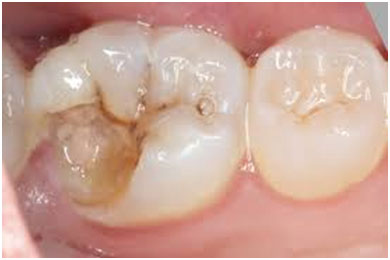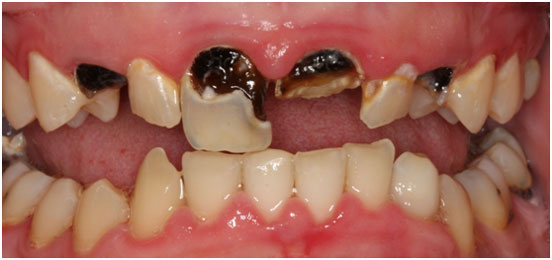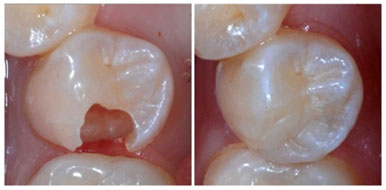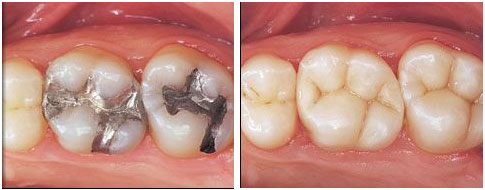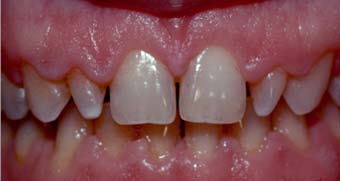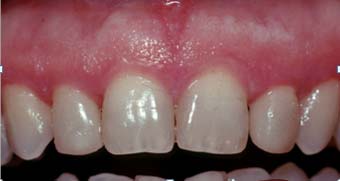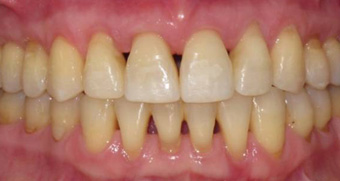- Broken front tooth due to an accident
- Tooth decay
- Decay on several teeth
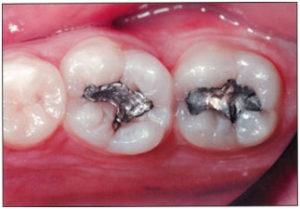
Amalgam fillings in posterior teeth
- Composite filling
- Replacement of amalgam fillings with composite resins (AACD.com)
- Before bonding of the upper teeth
- After bonding of the upper teeth
- Before bonding of the upper teeth
- After bonding of the upper teeth
However, when the destruction of the tooth is so extensive that there is a risk for tooth fracture the construction of a crown may be a safer and more predictable treatment choice.
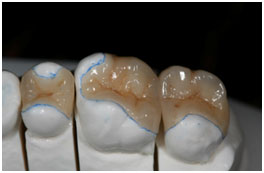
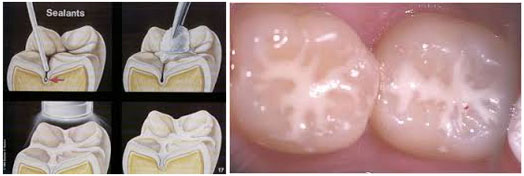
Sealants can keep up to 10 years, however it is recommended to monitor them during the regular dental visits. If needed the dentist can repair the sealants by adding extra material or replace them.
The sealants are placed, mainly, at children as soon as the first permanent posterior teeth erupt. The first permanent molars erupt between 5 and 7 years and the second molars erupt between 11 and 14 years. Premolars may also need sealants. Finally, teenagers and young adults without decay and fillings can also benefit from the placement of sealants. Indeed sealants have been proven to be an excellent investment since they may prevent from long and costly treatments such as fillings, crowns, bridges, implants etc.

